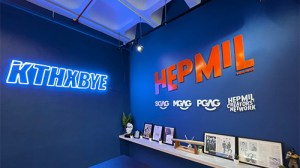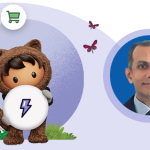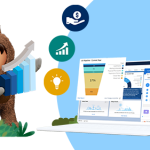HEPMIL Media Group strives to engage millions in Southeast Asia through thought provoking and entertaining content. The network of technology-driven media companies boasts a weekly reach of more than 50 million people across multiple content platforms. It generates more than 3 billion monthly views via the HEPMIL Creator’s Network (HCN).
But that’s only the beginning. HEPMIL has also helped leading global brands including McDonalds, Disney, and Starbucks connect with GenZs and Millennials in Southeast Asia through effective social media campaigns.
It all started in 2012 when HEPMIL Co-founders Karl Mak and Adrian Ang turned a viral meme about the McDonald’s curry sauce shortage into SGAG — an influential comedy platform in Singapore. The company replicated its success in Malaysia with the launch of MGAG in 2015 and in the Philippines with PGAG in 2018.
Also in 2018, the company launched cross-platform tech channel SGEEK. It then expanded its regional presence in 2021 with HEPMIL Media Indonesia, HEPMIL Singapore, and HCN in Malaysia and the Philippines.
Tackling the reliability challenge
The company’s revenue is predominantly generated through sponsored brand content and client campaigns on Facebook, Instagram, and TikTok. Michelle Tan, General Manager at HEPMIL Singapore, says customer engagement and building long-term client relationships has been critical to the company’s rapid growth — particularly in the short-term world of social media.
“Our goal is always to be authentic and trustworthy partners to our clients, mainly because in the social media space there are so many creators and younger startups that are very focused on short-term goals,” she explains. “But we strongly believe in building and maintaining long-term client relationships. To achieve that, we need to be reliable and transparent.”
That was a challenge in the early years of the company. Michelle says quick access to up-to-date client data is essential to building trust in customer relationships — and online spreadsheets were not a suitable tool.
“We started with Google Sheets, and there were definitely instances where people didn’t fill out mandatory fields, which led to missing client data. As the business grew, we also started to lose track of the master document, so updating Sheets was a problem. That meant up-to-date client data was often difficult to find or not available.”
Michelle says this lack of reliable, real-time data also made reporting to senior management and shareholders inefficient. “Whenever a request came from senior management or shareholders, we’d have to spend a lot of time crunching numbers and checking that the data had been updated. We needed intelligent automation software that would solve this.”
The power of data-driven decision making
Sales Cloud was the solution the HEPMIL team needed. Chiang Ling Yi, Regional Product Lead at HEPMIL Media Group, says the company is now using Sales Cloud to manage the entire client lifecycle — from leads to project closure.
“Enquiries submitted via all our brand websites now flow directly into Sales Cloud, and the Business Development Lead in each country assigns different team members to follow up,” he explains. “Then there’s a customer discovery process, a proposal stage, and finally moves into an active project. This is all managed in Sales Cloud.”
Ling Yi says Sales Cloud has also transformed the company’s reporting capabilities. His team has customised more than 10 Sales Cloud dashboards that enable real-time data reporting across departments.
“For example, a business team might use a dashboard to look at what projects are in the pipeline, what’s still in proposal stage, how long each project has been running, what is in each team member’s workload, and what revenue their team is bringing. On a senior management dashboard, we’re looking at things like revenue per country and revenue distribution across regions.”
The company is also using Salesforce Inbox for client-facing roles, and Sales Cloud workflow automations are integrated into legacy project management software. “Whenever the business development team updates Sales Cloud, new information is automatically updated on our project management platform,” says Ling Yi.
Real-time insights drive business growth
Michelle says Salesforce has delivered significant business value on multiple fronts. “Many hours have been saved in crunching numbers because we can now rely on our customised dashboards. This alone has improved productivity by about 5 percent, and we can spend the saved hours on more productive work.”
Access to reliable, real-time data through Sales Cloud dashboards has also enabled the HEPMIL team to take a more targeted, proactive approach to customer engagement.
“We can now track whether a client’s spend has increased or decreased over time, which enables us to identify areas for change and open up conversations with the client,” Michelle explains.
Perhaps most significantly, Sales Cloud data also enables Michelle to track trends in client demand, and to resource projects appropriately to cut waste and reduce costs.
“With Salesforce, we can identify client demand and forecast future customer demand to make important business decisions. For example, one year ago the demand may have been for three-minute videos that needed a 10-person crew. However, now the demand may have pivoted to one-minute videos that require a much smaller crew. I can restructure our creative and production teams based on the current demand. This has contributed to an approximate 20 percent increase in business growth.”
Michelle adds that Salesforce has also helped to power HEPMIL’s rapid regional growth. Data insights through Sales Cloud have helped teams in other countries identify and target potentially high-value clients.
“When we use Sales Cloud to track deal size in Singapore, it gives teams in Malaysia, the Philippines, and Indonesia insights into which clients they can potentially reach out to and spend time nurturing a relationship with them in their own region,” she concludes. “Salesforce has been critical to achieving that.”
























